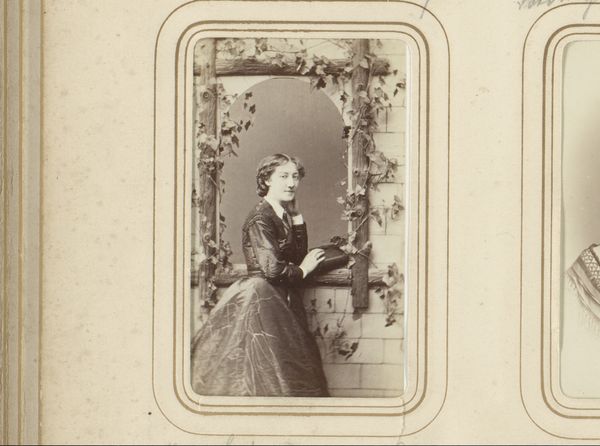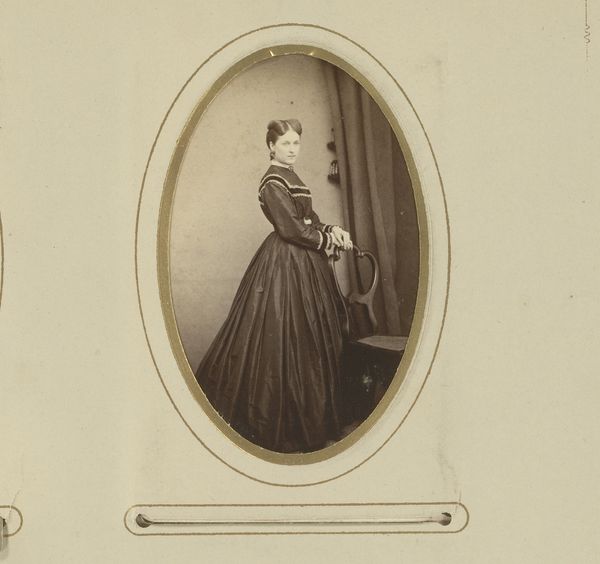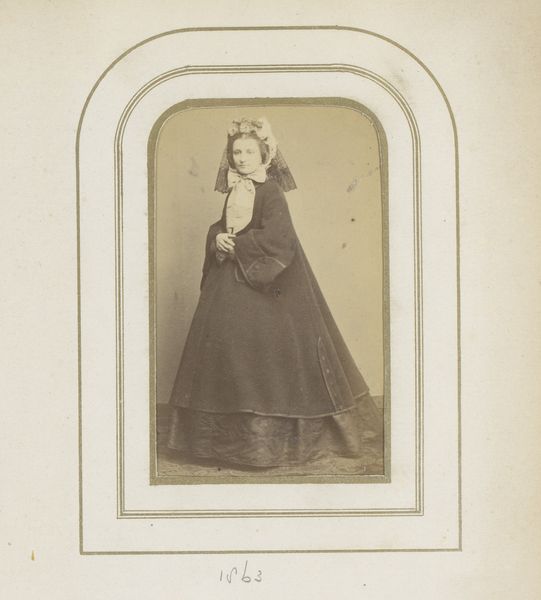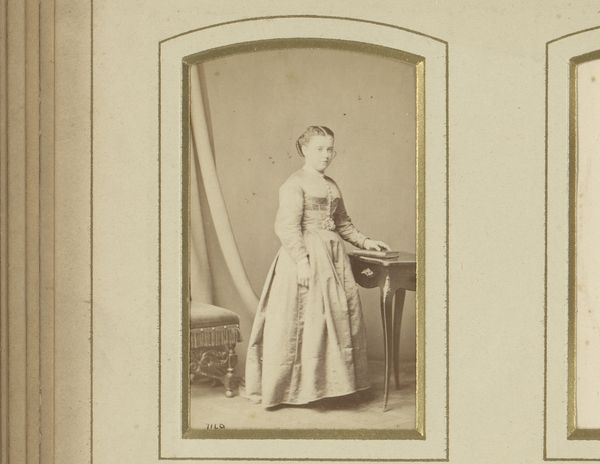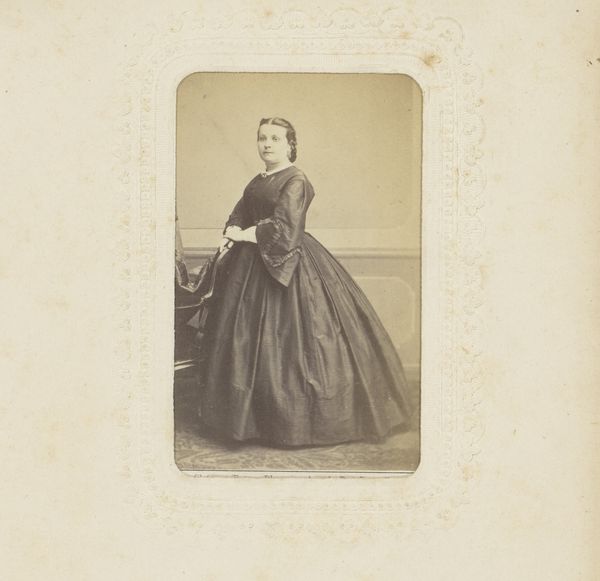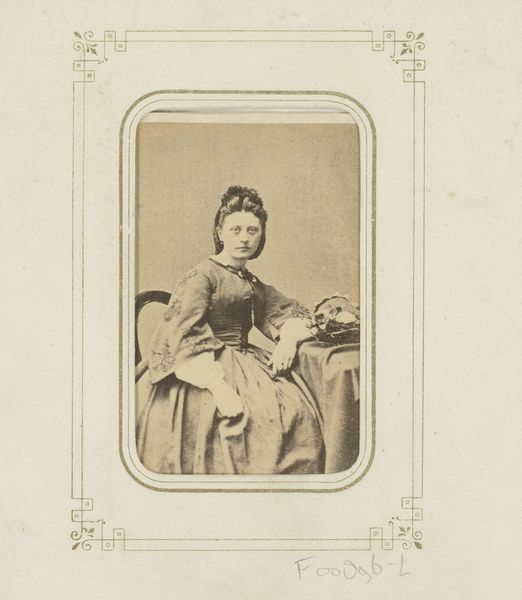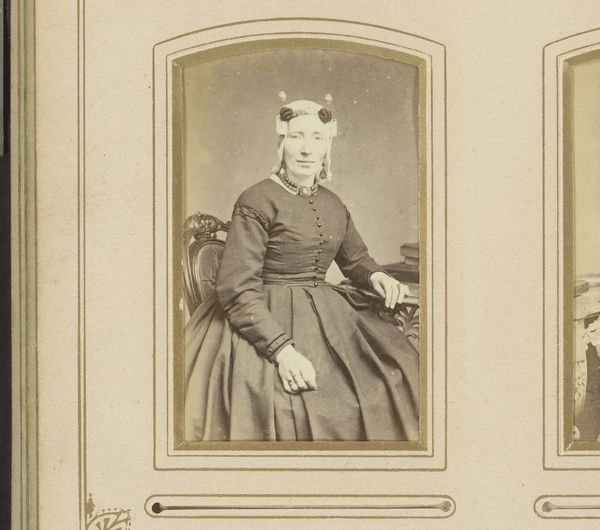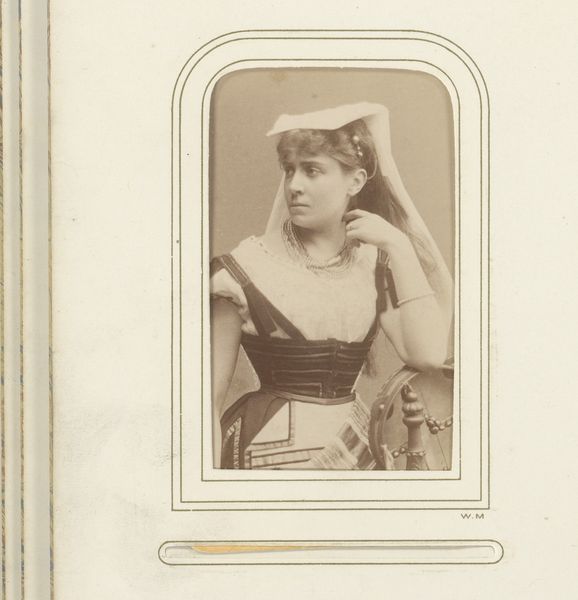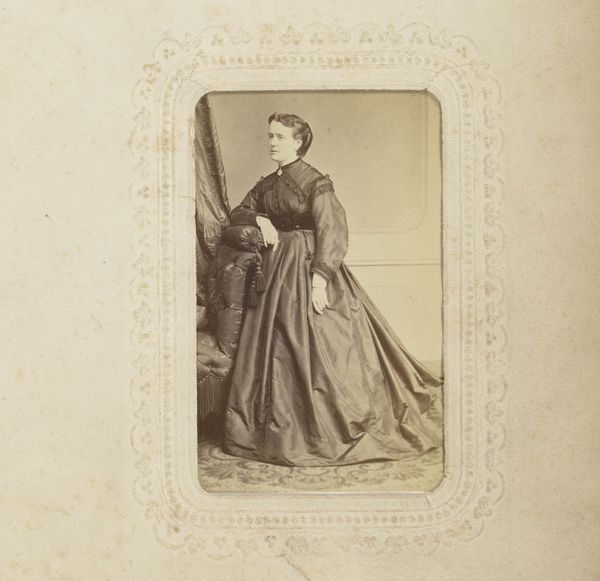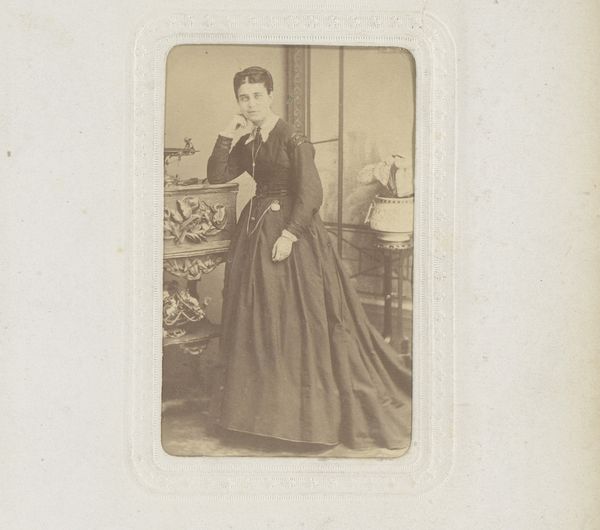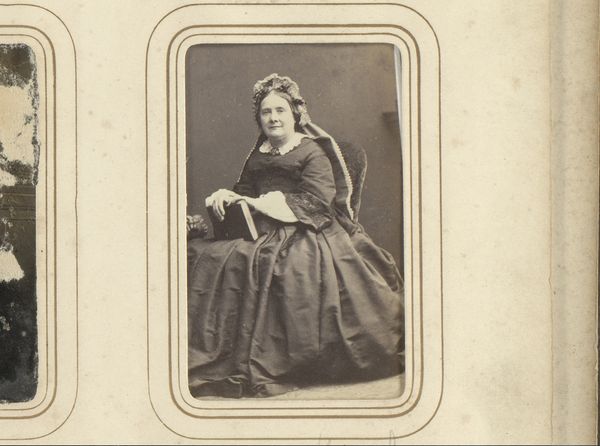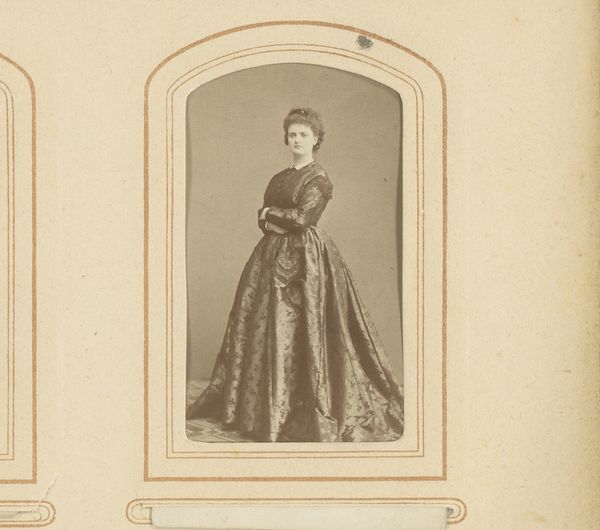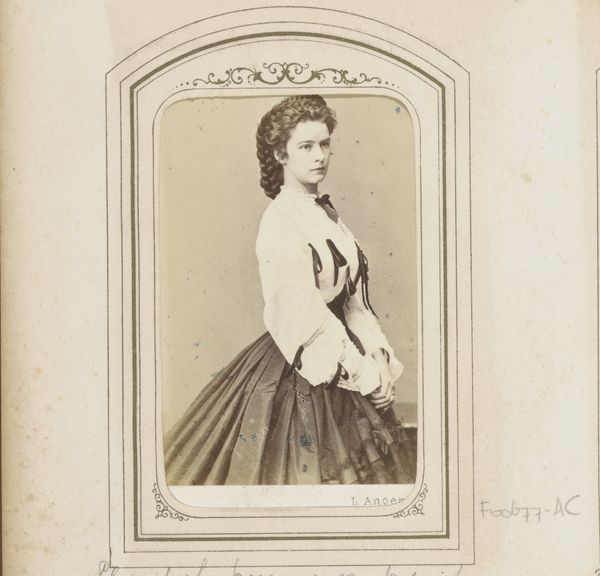
photography
#
portrait
#
photography
#
historical photography
#
historical fashion
#
19th century
Dimensions: height 84 mm, width 51 mm
Copyright: Rijks Museum: Open Domain
Curator: Welcome. We're looking at "Portret van Minnie Hauck," a photograph attributed to Charles Reutlinger, likely taken between 1867 and 1890. It's part of the Rijksmuseum collection. Editor: The dress! All that silk, the layers of lace... it's striking. The photograph makes her look stiff, almost uncomfortable. Curator: Fashion played a pivotal role in social identity in the 19th century, and portraiture like this was a tool to project status and taste. The photographic studio was an important site for that projection. Editor: Exactly! Consider the sheer labor involved. Each layer of that gown was made by hand, somebody spent hours upon hours cutting and sewing and fitting those frills. Who were these laborers? What were their wages? Curator: Absolutely. Studios like Reutlinger’s operated as businesses within a hierarchical labor system. This photo offered aspirational material display to its viewers. It showed the fashions and status available during the late 1800s. Minnie Hauck herself might have used this photograph to further her career as a popular singer. Editor: And we see the result: so much excess fabric shaped into an idealized hourglass figure. But look closer at how photography creates the illusion of that luxurious texture. Consider the role that chemicals played and their environmental effects: the silver nitrate, the development process, the waste produced to realize a fashion portrait. Curator: A crucial point to bring up; even something seemingly straightforward like a portrait photograph comes with inherent socio-economic and ecological considerations. How sitters used portraiture played a key role in determining the circulation of certain messages. Editor: Precisely, the social power in that era rested in controlling production, image construction, and material accessibility, not just posing in fancy garments. It gives a new context to considering not just the "what" of art, but also the "how." Curator: That's it—historical awareness challenges our preconceptions about wealth, visibility, and status in art. Editor: Agreed; questioning those power dynamics inherent in art pushes beyond face value.
Comments
No comments
Be the first to comment and join the conversation on the ultimate creative platform.

